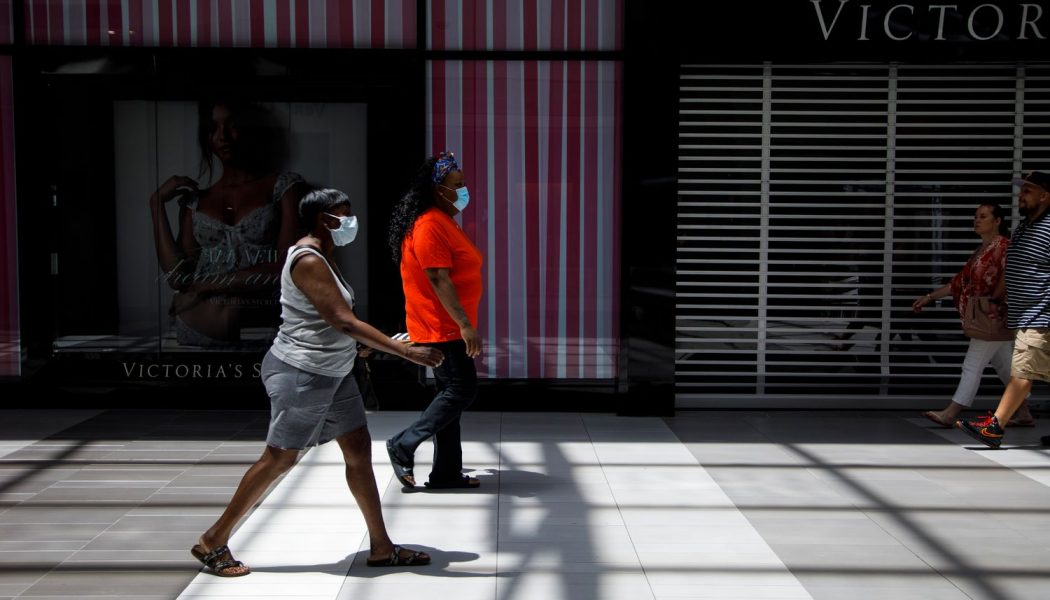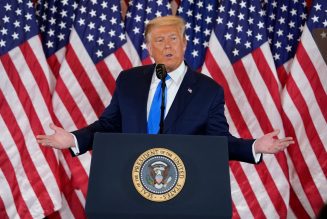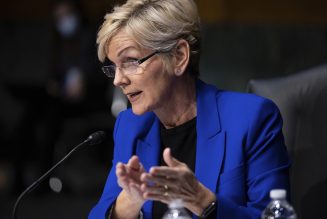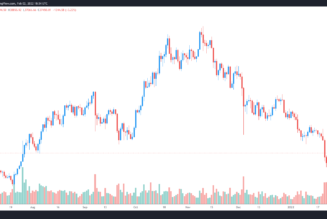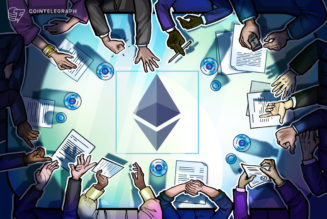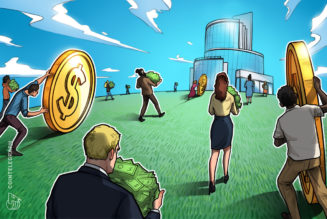A muddled, middle-ground scenario is also possible — one in which red states open faster and many blue states go slowly, a phenomena that is already showing up to some extent and giving the entire process a distinctly partisan overlay.
Americans will need to wait weeks after the first state reopenings, throughout the incubation period for Covid-19, to gauge which approach is more likely to play out and determine the economic and political future of the nation for months and perhaps years to come.
“There is a path here where the market just keeps going up and whatever second wave exists is within the capacity of the health care system to handle and the supply curve of available pharmaceutical treatments bends upward and we get closer to a vaccine,” said Michael Cembalest, chairman of market and investment strategy for J.P. Morgan Asset & Wealth Management, who has been closely following the available medical and economic data on Covid-19 while working from home on Long Island. “All those things could happen. But it would require an awful lot of things to go right.”
The scenario where things don’t go right is frightening many economists and health experts as well as a majority of Americans who still feel afraid — though perhaps slightly less so than a month ago — that the health infrastructure is not in place to toss aside stay-at-home orders and pile back into workplaces, restaurants and shopping centers. These people fear the process now in play could wind up making things much worse.
“My concern is that we will start to see little spikes that then turn into outbreaks,” Dr. Anthony Fauci, the U.S. government’s top infectious diseases doctor, warned at a Senate hearing on Tuesday. Fauci, testifying remotely due to possible coronavirus exposure, told the Senate HELP Committee that the U.S. could see “needless suffering and death” if it reopens too fast. “The consequences could be really serious,” he said.
Fauci offered a very different message than Trump delivered at a flag-bedecked press conference in the White House Rose Garden on Monday. “We have met the moment, and we have prevailed,” Trump declared, later clarifying that he meant the U.S. had prevailed on testing capacity, not over the virus itself. “We will defeat this horrible enemy, we will revive our economy, and we will transition into greatness. That’s a phrase you’re going to hear a lot because that’s what’s going to happen,” Trump said.
And there are conservative economists, inside and outside the White House, who back the current approach in which many states are lifting stay-at-home orders and allowing businesses to reopen.
They argue the recent increase to over 300,000 tests per day — while well below what many health experts advocate — and the overall downward curve in the pace of new cases suggest the time to stop the economic hemorrhaging is now.
The nation has already lost more than 33 million jobs and seen the official jobless rate spike to nearly 15 percent (a figure headed higher once everyone thrown out of work is counted). Economic growth is expected to decline by up to 40 percent on an annualized basis in the second quarter. So the economy getting rebooted now is critical, these people say, before the economic damage becomes permanent.
In that camp, the people warning of disaster could wind up looking silly.
“I am reading 50-plus health reports, data reports and economic projections per day. And the idea that the states reopening early is this huge unrecognized risk is simply not evident anywhere I look,” said conservative portfolio manager David Bahnsen, managing partner and chief investment officer of The Bahnsen Group. “South Carolina, Georgia and Tennessee have continued to see case growth and fatality decline, far below even the levels Europe had before they began easing restrictions.”
Bahnsen added that “those predicting doom and gloom from reopening will sacrifice credibility.”
Kevin Hassett, a senior Trump economic adviser, said at a Brookings Institution online conference on Tuesday that the federal government provided guidelines for when a state could safely begin to reopen but was not keeping score if states that are doing so have actually met those guidelines. Most have not.
But he suggested data so far looked positive in states that are now seeing increased economic activity. “So far, and it doesn’t mean that we are out of the woods, but so far the data have been moving very, very slowly but in a positive direction.”
Advocates of a quick reopening of the economy suggest it could lead to a much faster economic revival because it will allow more businesses to survive and quickly rehire the millions furloughed or laid off in the last eight weeks. They say it will also keep markets afloat and reduce the need for the federal government to spend more than the roughly $3 trillion already approved to help cushion the economic blow of the rapid economic lockdown.
Advocates of a swift reopening often cite the fact that 78.3 percent of those who lost jobs last month said they expected to get their jobs back when the crisis abates. The longer America’s states stay shut, the more likely these job losses will become permanent, advocates of fast reopening say.
Those urging more caution in reopening and much more federal assistance — a group that includes many health experts, economists, Democratic governors and left-leaning lawmakers — say the “open now” approach is based more on faith and hope than science.
They cite recent reporting that coronavirus cases are spiking to new highs in both metro areas and smaller communities in states that did not initially have large virus outbreaks and have relaxed stay-at-home restrictions like Tennessee, Iowa, Texas and Kentucky.
They also argue that despite Trump’s boasts, the U.S. does not have anywhere near the number of tests or the ability to track and trace those infected by the virus to make mass reopening safe, despite significant improvement in recent weeks.
Many health experts say the U.S. has to at least double or triple the current amount of testing to make reopening safe.
Sen. Mitt Romney (R-Utah), a frequent Trump critic from the right, on Tuesday added a bipartisan note of criticism to the president’s declaration of victory on testing. “I find our testing record nothing to celebrate whatsoever,” he said at the Senate HELP Committee hearing.
Those who fear that states are reopening too quickly warn that virus cases will spike in multiple areas, possibly overwhelming hospitals once again, triggering a sell-off in markets and forcing new lockdown orders that could tip the economy from a short but deep recession into a depression.
Even if some things go well, some in corporate America say the boom times Trump is predicting are not likely to materialize.
“Our expectation here is that this is going to be fits and starts. I am not someone who has bought into a super-aggressive, everything-gets-fine-in-the-fall sort of thing. I think that’s crazy talk,” Andrew Silvernail, chairman and CEO of Illinois-based manufacturing firm IDEX Corp. said on the company’s recent earnings call.
“If we get lucky, and for some reason, this goes away with weather or something else or a vaccine is found more quickly than we think or you have very, very effective treatments, great news,” he said. “I don’t think anybody should bank on that, and I certainly wouldn’t manage the company expecting that.”
Others note the fact that the virus is spreading among White House staff will not inspire Americans that it’s time to rush back to work.
That is part of the reason why House Democrats are now pushing for a swift vote on a new $3 trillion coronavirus relief package that would include large sums of money for state and local governments. Republicans so far have been cool to the idea, leaning instead into reopening and waiting to see if current aid — on top of trillions of dollars being pumped into the economy by the Federal Reserve — turns out to be enough.
